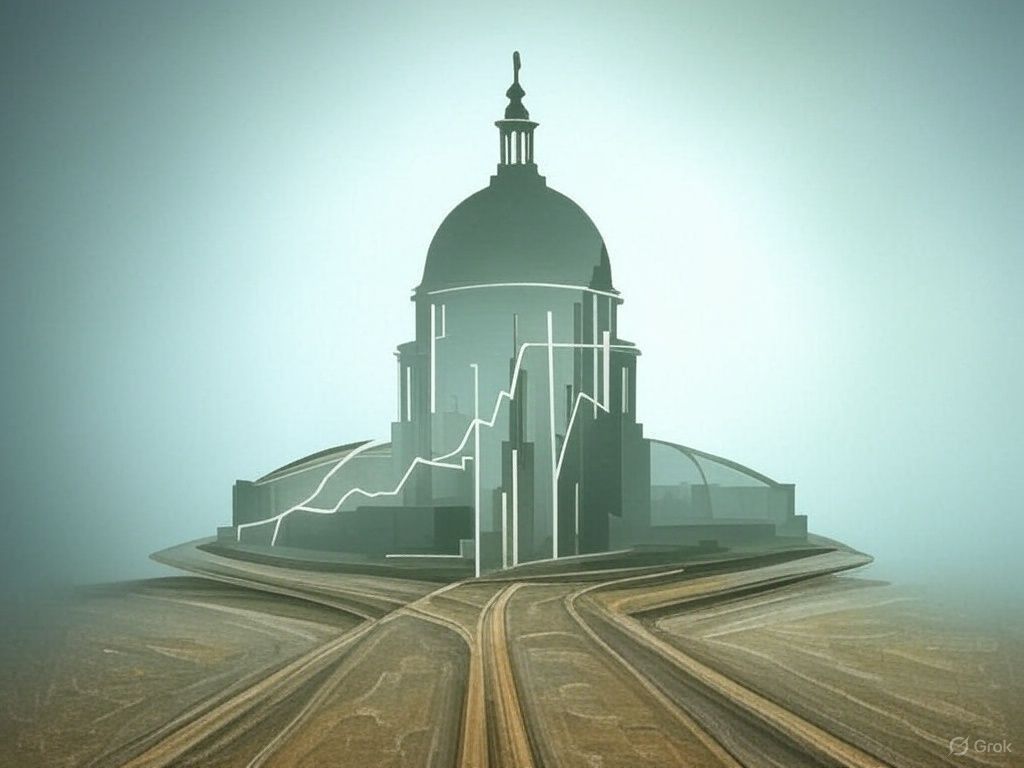California High-Speed Rail Boondoggle or Game-Changer?
The California High-Speed Rail: A Boondoggle or a Game-Changer?
In a joint conference with newly elected Canadian Prime Minister Mark Carney on Tuesday, President Donald Trump said that the federal government would not put any more money towards the California High-Speed Rail system, all but ensuring further budgetary gaps for the controversial project.
Trump's Threats to the High-Speed Rail Project
Speaking from the White House, Trump added that spending on California’s high speed rail project was out of control and that the project, along with other state incidents like his Los Angeles wildfire response in January, would likely make Governor Gavin Newsom unelectable in 2028.
“That train is the worst cost overrun I’ve ever seen,” said Trump on Tuesday. “It’s, like, totally out of control. I’ve watched a lot of stupid people build a lot of stupid things, but that’s the worst cost overrun I’ve ever seen. This government is not going to pay. I told our very great new secretary of transportation — he’s doing a good job, Sean Duffy — I said we’re not going to pay for that thing.
“I would love [Newsom] to run for president. I’d love to see that, but I don’t think he’s going to be running because that one project alone — well, that, and the fires and a lot of other things — pretty much put him out of the race,” said Trump.
Governor Newsom's Response
Governor Newsom’s office swiftly responded to the remarks, going after some of Trump’s past failed projects and saying that there was no way they would stop now with so much infrastructure and jobs on the line.
“Hard pass on fiscal tips from the self-described ‘King of Debt’ who ran a steak company, a casino, and a global economy — all into the ground,” noted Newsom spokesperson Izzy Gardon in a statement. “With 50 major structures built, walking away now as we enter the track-laying phase would be reckless — wasting billions already invested and letting job-killers cede a generational infrastructure advantage to China.”
The California High-Speed Rail: A Complex Issue
Originally estimated to cost $33 billion in 2008 with a San Francisco to Los Angeles line to open by 2028, the California high speed rail system has since ballooned to $128 billion, then $135 billion+, with an estimated partial completion somewhere in the late 2030’s.
And last year, CHRSA actually confirmed that the system still needed $100 billion to link up San Francisco and Los Angeles. The true cost may also be much higher than anticipated, with some estimates during the Governorship of Jerry Brown putting that figure at around $350 billion.
The Future of the High-Speed Rail Project
President Trump announced in February that he would be launching an investigation into CHSRA, fulfilling a promise his administration made to look into the system. Specifically, he noted that the high cost of the program was mind-boggling, echoing decades of criticisms within California that the project has been nothing more than a boondoggle.
With an investigation into CHSRA funding still ongoing in Washington and Trump now vowing not to give them another cent, CHRSA will likely now have to be reliant on private funding. Last week, high speed rail authorities confirmed that private funding would be needed to fill the $7 billion-$11 billion funding gap with no federal money coming in and previously promised grants by the Biden administration being stopped by the Trump administration.
“In the ideal world, you can take the 500 miles, build it in your warehouse and then just drop it and everybody’s happy,” explained CHRSA CEO Ian Choudri last week. “That’s not how this works. We need to move forward with a solid plan that prioritizes safety, efficiency, and sustainability.”
A Game-Changer for California?
The high-speed rail project has the potential to transform the way people travel in California, reducing traffic congestion and emissions while providing a faster and more efficient alternative.
Despite the challenges and controversies surrounding the project, many believe that it is a vital component of California's transportation infrastructure and can help to drive economic growth and development in the state.
